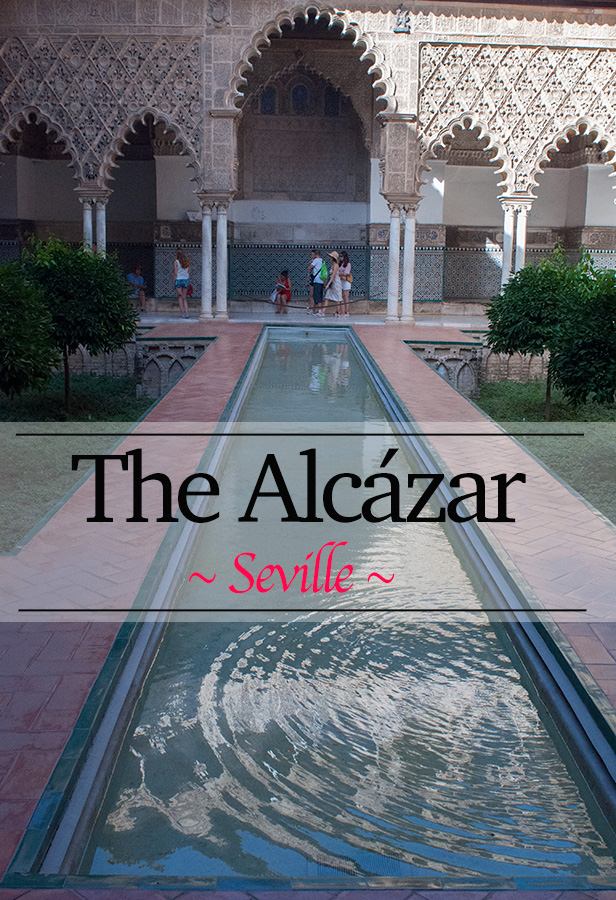
I had the unfortunate experience of visiting Seville’s Real Alcázar (royal palace) in late July, when the city was a flaming inferno of pain and torture (it really was). However, I’d also heard very little about it prior to my visit, which made my experience all the more memorable. I soon discovered – even while deliriously hot – that the Real Alcázar is an utterly magnificent place. In fact, it’s one of the grandest things I’ve seen in all of Spain.
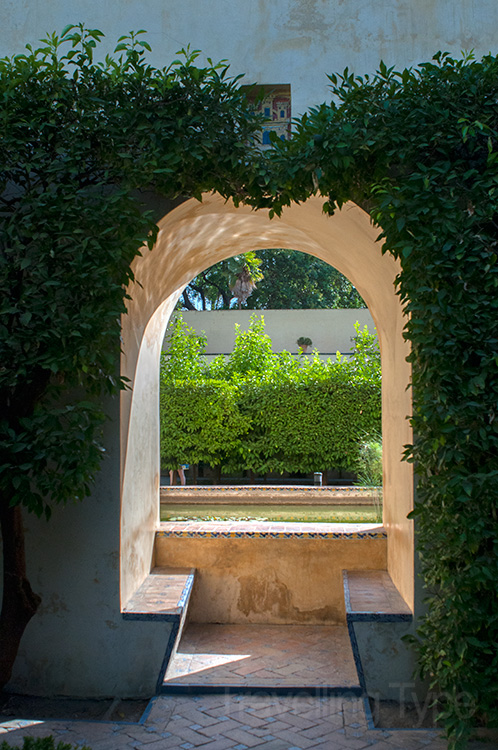
Firstly, what is Seville’s Real Alcázar?
The Real Alcázar is the oldest royal palace still in use in Europe today, as it’s the Spanish royal family’s official place of residence. And it’s no wonder, as it’s a sumptuous palace bordered with ambrosial gardens. A palace with a sublime mishmash of Mudéjar, Islamic, Renaissance, Gothic and Baroque architectural styles. In fact it’s such a handsome and historically significant complex that Unesco listed it a world heritage site in 1987.
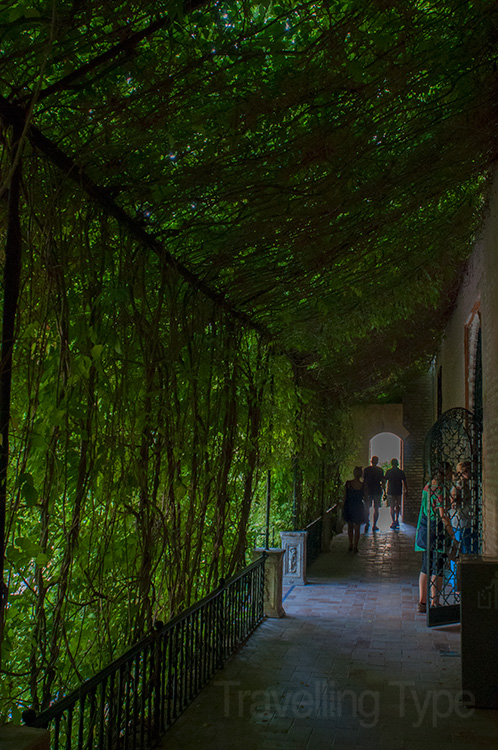
A (very) short history
In 913 the Moors gave birth to the Alcázar’s earliest form, a fort for the governors of Cordoba. In the 11th-century the fort was enlarged and a palace was added to the western complex, which was the first of many major overhauls to come. During the 12th-century, Almohad kings added a palace to the eastern complex and in the 13th-century, Seville was captured by Christian King Fernando III, whose son changed the Almohad palace into a Gothic one.

However it was between 1364 and 1366 that King Pedro I ordered master builders from Granada and Toledo to build, in Arabic style, what would become the Alcázar’s piéce de résistance – Palacio de Don Pedro. The Palacio de Don Pedro is the most architecturally impressive feature of the Alcázar and is arguably the most stunning piece of Mudéjar art (Mudéjars were Arabs who lived in Christian territory) in all of Spain.

My visit
Dripping with sweat and in desperate need of shade, I more or less staggered into the city’s Alcázar without expectations. This is definitely not a place you should visit on a whim (as we did), as the place closed two hours after we entered during a late afternoon.

Tip: give yourself at least half a day to explore the Real Alcázar. Taking a tour is a good idea, although it isn’t entirely necessary, as there’s plenty of information (in Spanish and English) along the way.

Some favourite places
The arches, tiling and plasterwork of the Palacio de Don Pedro are exquisite in detail and design and the effort gone into their construction is mind-boggling. Inside this section is the Patio de las Doncellas, which is a particular highlight, with its long, alluring pool and gardens surrounded by incredibly ornate arches. It’s a nice spot just to stop, marvel and take your time.
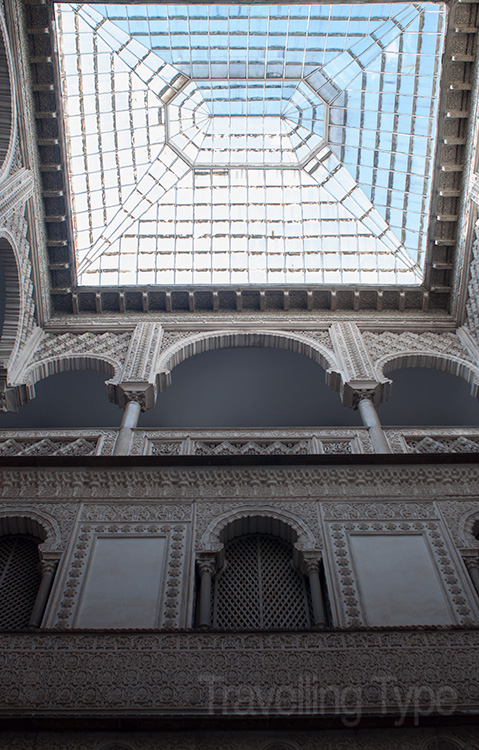

The Salón de Embajadores is quite possibly the Alcázar’s most attractive room and really shows off its craftsman’s talents. Look up and it’s like you’re in a bonafide palace (of course you are), with its ceiling that glitters with gold. This was allegedly the throne room of Pedro I and the ceiling – which looks a bit like a galaxy – had star patterns symbolising the universe added to it in 1427.
The gardens
What I enjoyed most about the Real Alcázar, however, was its gardens. Vibrant green, trimmed to perfection, with a maze, orange trees and fountains. A conspicuous feature in the gardens is Mercury’s Pond, which symbolises trade and has a stream of water shooting into it from a pipe above. Behind this is a stunning gallery of porticoes from the 16th-century, carved out of a Muslim-era wall called the Galeria de Grutesco.
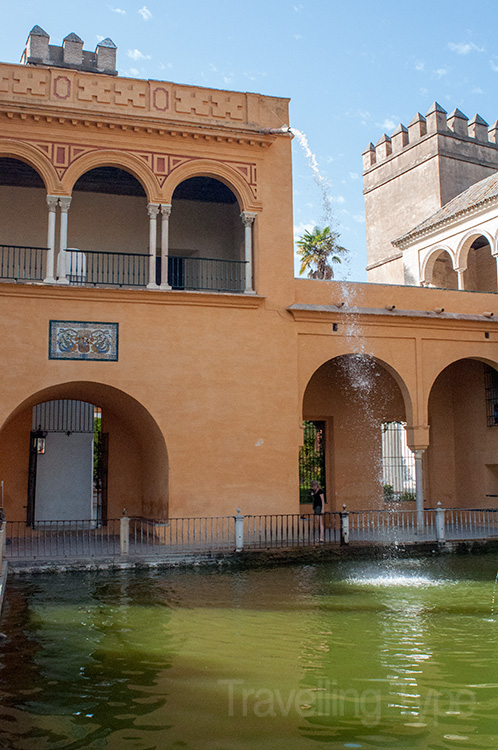
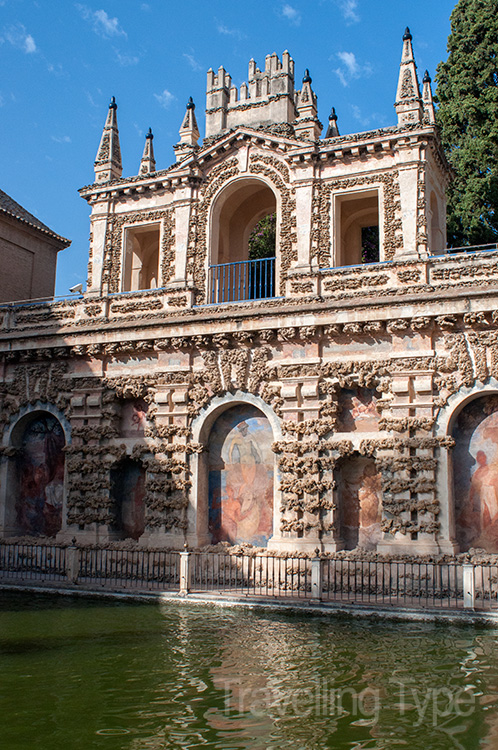
Stroll through this area and let your imagination wander. For this is the land of princes and princesses – it’s the real thing. From here I walked above the Galeria de Grutesco, along its lengthy passageways – bathed intermittently with sunlight – for a grand view of the capacious gardens. Again, having really no expectations made everything look even more gobsmackingly glorious.
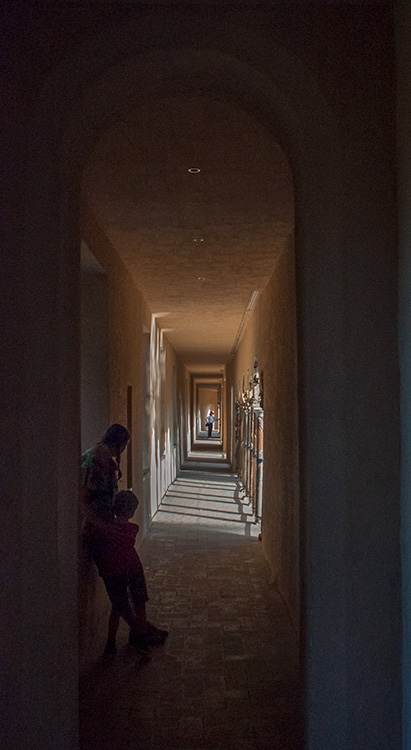
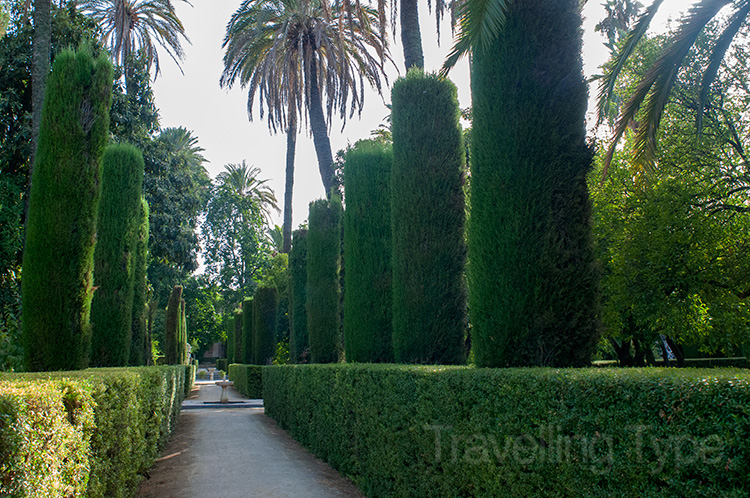
Unfortunately I somehow missed seeing the underground part of the Crossing Garden, known as the Baños de Doña Maria de Padilla, which is a real highlight of the Alcázar. Here you’ll find gothic-style vaults and a long pool with a 16th-century cave fountain located at the end. I’m still annoyed I didn’t see this, so if you’re planning a visit, make sure you do!

The sour orange tree
Further into the gardens and close to the pavilion of Carlos V is a sour orange tree believed to be planted by King Pedro I, which would make it more than six centuries old. This could be quite true given the lifespan of the sour orange tree, a species which has been known to dwell in the Alcázar’s gardens since at least the 12th-century.
Sour orange trees were introduced to Spain by the Arabs for ornamental purposes and use in perfumes, as they’re too sour and contain too many pips for consumption. I stood there stroking and admiring the tree, wondering if it really was that old.

The Fountain of Fame
My final stop in the Real Alcázar – which was arguably my favourite – was at the garden’s hydraulic organ called the Fountain of Fame. The Fountain of Fame is Spain’s only organ fountain dating to the 17th-century and it’s one of only four left in the world.
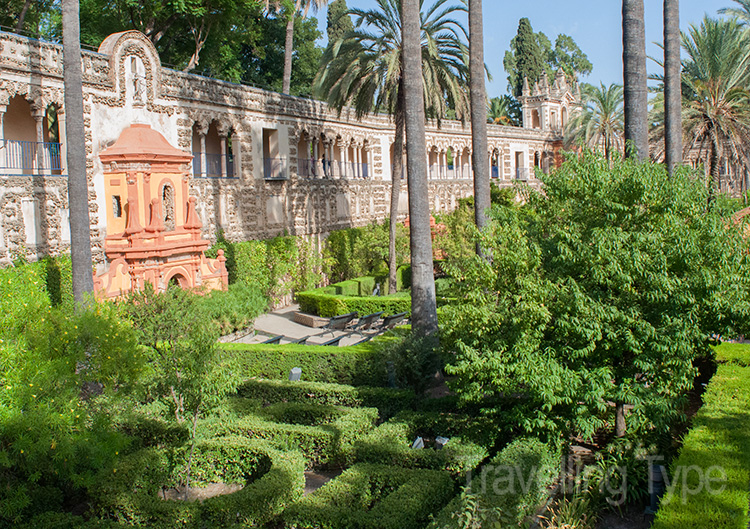
This curious contraption is triggered by hydraulic air pressure, that’s produced by water, on the hour every hour. I happened to stroll past at the stroke of 7pm. I sat down amongst the exquisite gardens and listened to the last instrument of its kind in Spain. It was lovely.

Is Seville’s Real Alcázar worth visiting?
Seville’s Real Alcázar is one of the best places I’ve seen in my nine months wandering through Spain. I enjoyed it more than Granada’s revered Alhambra, which I spent much more time at. Although as I’ve said, do not underestimate a Sevillian summer. It gets blisteringly hot. If you go in late July as I did, you might use the Alcázar as a brief sun shield rather than what it deserves – at least half a day of your time.
Entry prices and opening hours vary, depending on the time you visit. Check out the Real Alcazár’s website for more details.
Save this to Pinterest:
